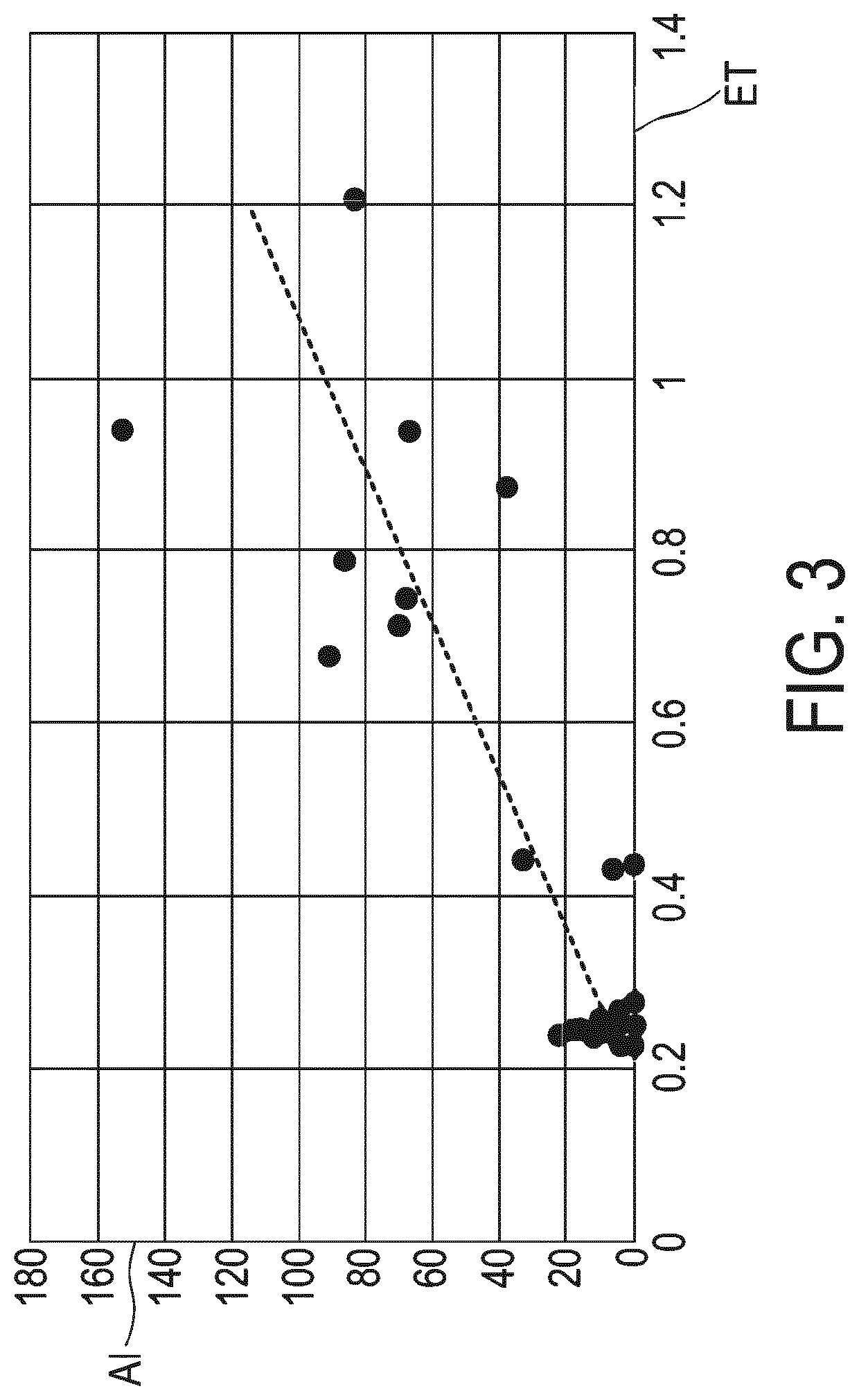CT scan parameter optimization
a technology of scan parameters and optimization techniques, applied in the field of computed tomography (ct) devices, can solve the problems of poor signal-to-noise ratio and image quality poor
- Summary
- Abstract
- Description
- Claims
- Application Information
AI Technical Summary
Benefits of technology
Problems solved by technology
Method used
Image
Examples
first embodiment
[0134]FIG. 6 shows a method for operating the CT device. The CT device operated using the method can for example be the embodiment of the CT device as presented in FIG. 1. The CT device can be integrated in a spiral CT system, for example the spiral CT system as presented in FIG. 5.
[0135]In the method an object specific ET is determined based on a max(mAs) value along a z-axis of an object and a max(mA) value of a tube used for a scan of the object. The max(mA) value depends on a tube voltage and maximal electric power of the tube at given focal spot. The mAs(z) profile is based on a dose index value or a pixel noise index value for the scan of the object, the tube voltage, and an object size(z) along the z-axis. Values of scan parameters for a scan of the object are determined based on the object specific ET. The method allows an improved determination of the values of the scan parameters for the scan of the object. The values of the scan parameters determined using the method allo...
second embodiment
[0159]FIG. 7 shows the method for operating the CT device. In this embodiment of the method the tube voltage can be iteratively adapted in order to optimize the object specific ET.
[0160]When at a given tube voltage the max(mA) value that the tube can be operated with is reached, changing the tube voltage can allow to reduce the object specific ET. In order to allow the pixel noise to be kept at least almost constant when changing the tube voltage, the CTDI is kept constant. In this embodiment, this allows to reduce the ET by up to
[0161](kVp2kVp1)1.9
with kVp2 being the adapted kilovoltage peak of the tube voltage and kVp1 being the previous kilovoltage peak of the tube voltage. Adapting the tube voltage can be used to decrease motion artifacts in scans in which an impact of a high tube voltage on contrast is less relevant and ET can be reduced.
[0162]Steps 100 to 180 and 200 to 212 correspond to the steps as presented for the embodiment of the method presented in FIG. 6 with the diffe...
PUM
 Login to View More
Login to View More Abstract
Description
Claims
Application Information
 Login to View More
Login to View More - R&D
- Intellectual Property
- Life Sciences
- Materials
- Tech Scout
- Unparalleled Data Quality
- Higher Quality Content
- 60% Fewer Hallucinations
Browse by: Latest US Patents, China's latest patents, Technical Efficacy Thesaurus, Application Domain, Technology Topic, Popular Technical Reports.
© 2025 PatSnap. All rights reserved.Legal|Privacy policy|Modern Slavery Act Transparency Statement|Sitemap|About US| Contact US: help@patsnap.com



